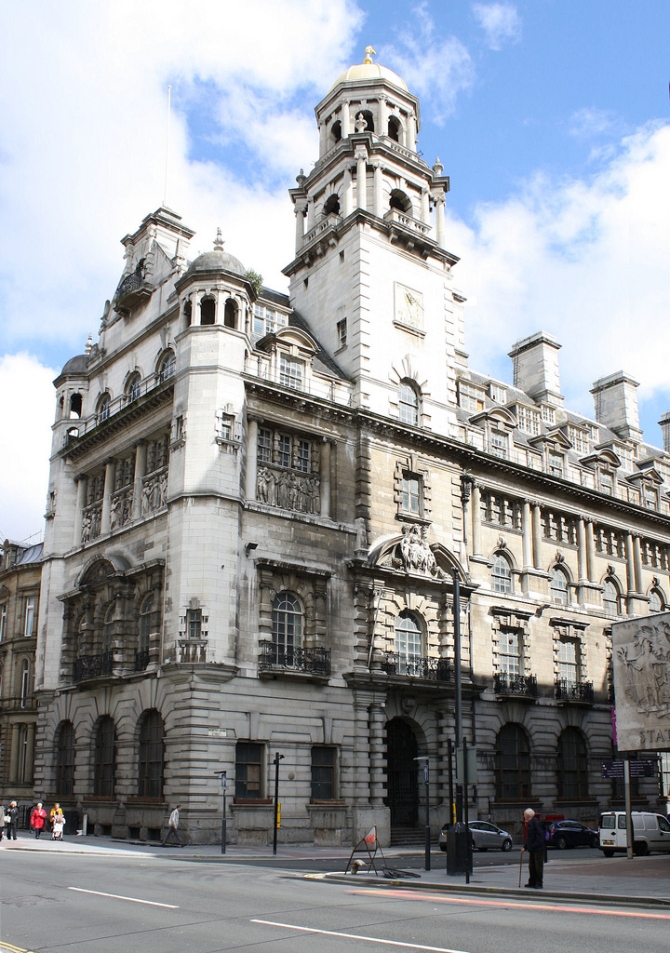Two neglected Liverpool Grade II listed buildings are being brought back to life by separate multi-million regeneration projects.

More than £18m is being spent to transform the city’s historic Royal Insurance Building (pictured) into a hotel and a £16m project is underway to refurbish the Watson Building, the only surviving part of the original Lewis’s department store in Liverpool.
Earlier this year the city council paid £1.95m for the landmark insurance building at the corner of North John Street and Dale Street. Now an investment by Runcorn-based developer Ashall Property will see the listed building — which has stood empty for almost 20 years — converted into a Starwood Hotels & Resorts Worldwide branded resort.
“At a time of inertia in the economy, we are taking the bull by the horns and doing things differently,” explained Liverpool mayor, Joe Anderson. “This scheme is another great example of how we are targeting our resources creatively to help kick-start development and investing in assets that bring in new income streams for the council.
“The Royal Insurance Building has been empty for too long, and its rebirth is great news for our city, for our economy and for our hotel sector,” he added. “We are protecting our past, as well as investing in our future.” Completed in 1903, the former insurance headquarters was recently placed on the National Buildings at Risk Register.
Starwood’s UK and Ireland area manager, Colin Bennett, said Merseyside was chosen to extend the company’s Aloft branded hotel chain after the success of a London opening last year. “There is a strong demand for affordable yet stylish, cutting-edge hotel brands,” he claimed.
One refurbishment project already underway is the conversion of the 1930s Watson Building to more than 73,000sq ft of office space. West Nile Developments (WND) was given approval by city planners earlier this year and expects work on the former department store to be completed late in 2015.
Paul Wellstead is WND’s development manager. “Having fallen out of use many years ago, the building will be given a new future linked to the wider Central Village quarter,” he explained. “And creating a workplace for 700 people will act as a catalyst for wider regeneration of the Renshaw Street area of the city.”
Almost a third of the scheme’s £16m finance has come from a Chrysalis Fund loan. “We are very pleased to have been in a position to provide a £5.6m loan towards the redevelopment of the Watson Building,” said Jim Gill, who steers the fund established specifically to support renovation throughout Merseyside.
“This regeneration project will provide high quality office accommodation within the Lime Street area which is an important gateway to the heart of city,” he added.
Recently released figures show that Liverpool council’s support for projects that bring historic buildings back into use is having a real impact. Only four per cent of the city’s buildings are now on the National Buildings at Risk Register — compared with a national average of around seven per cent.
Previous Post
Cornish Coffee Shop Campaigners fail to curb Costa